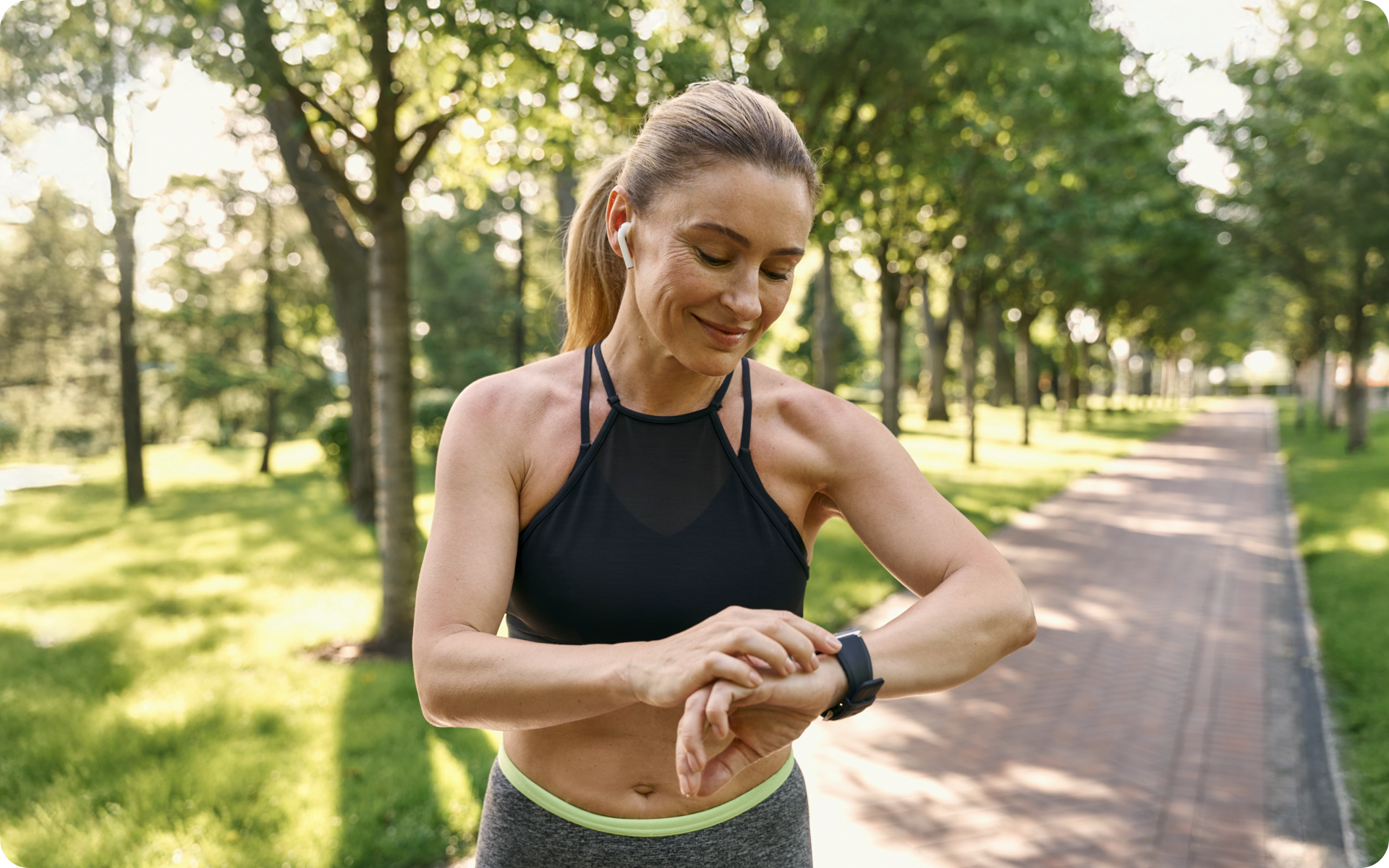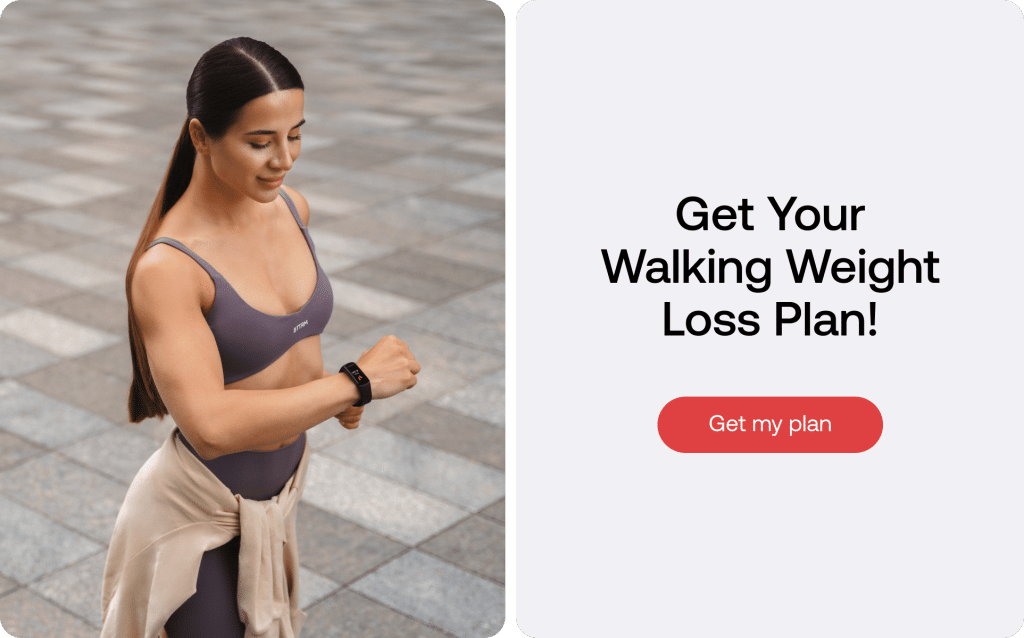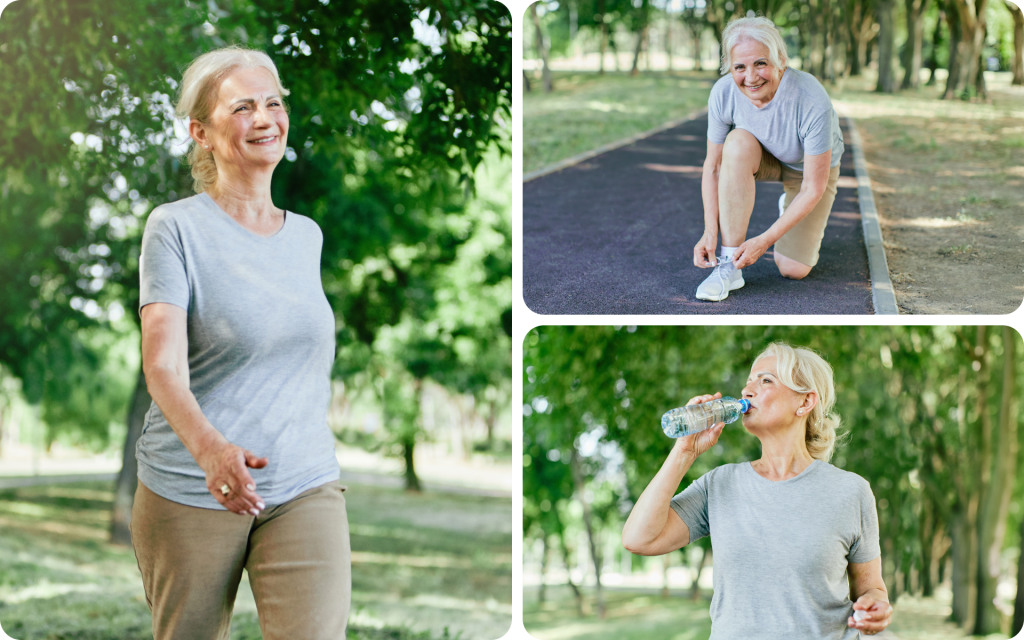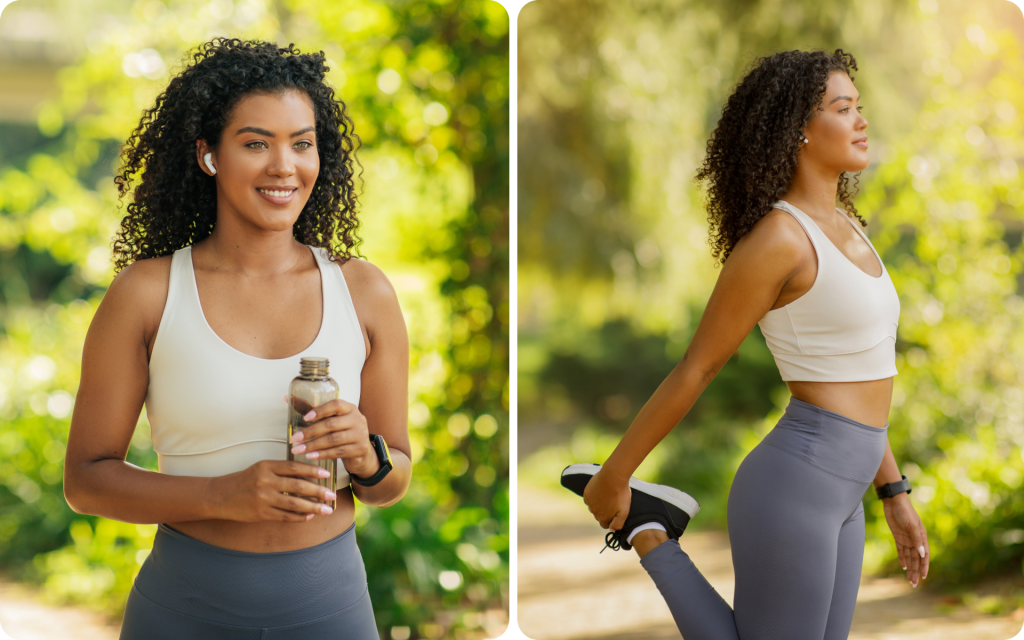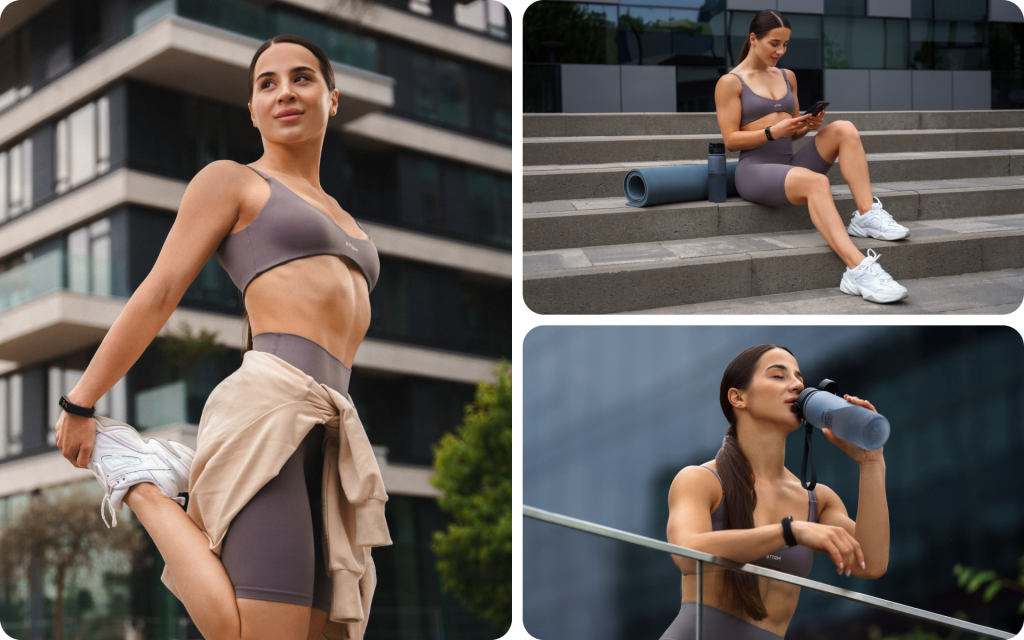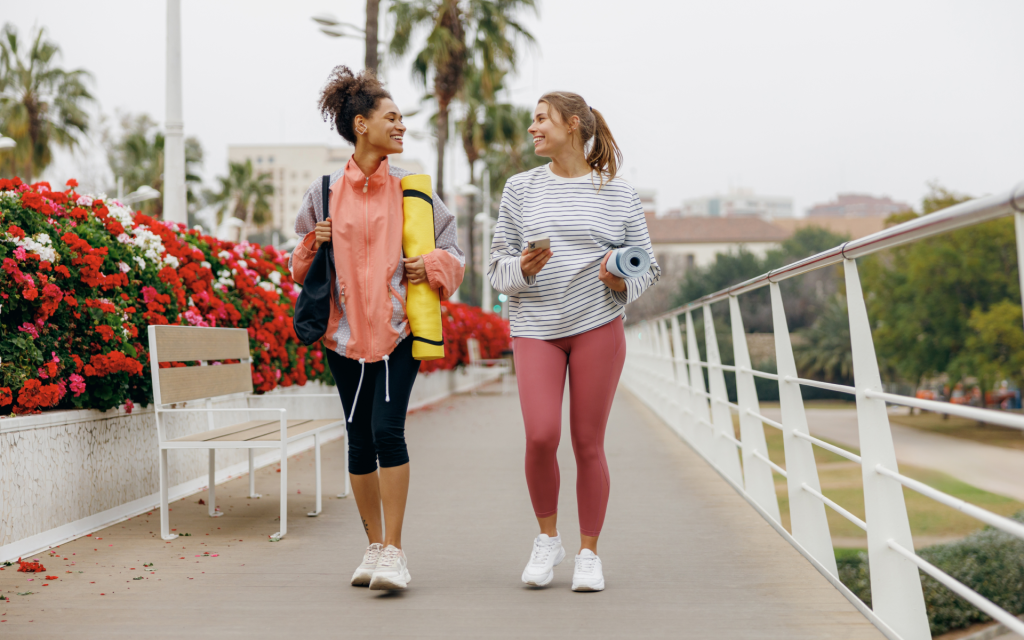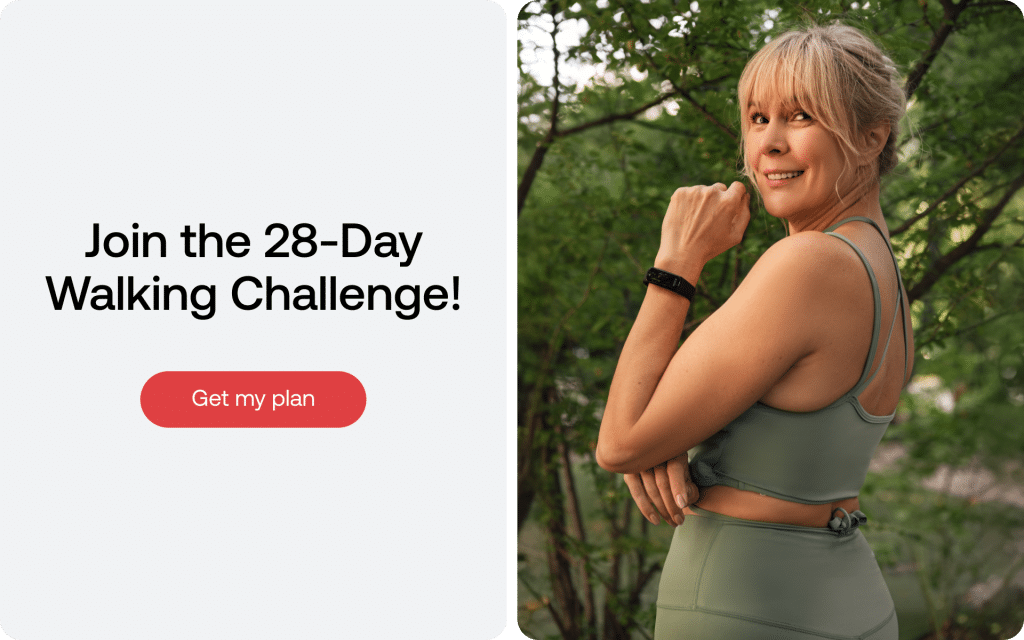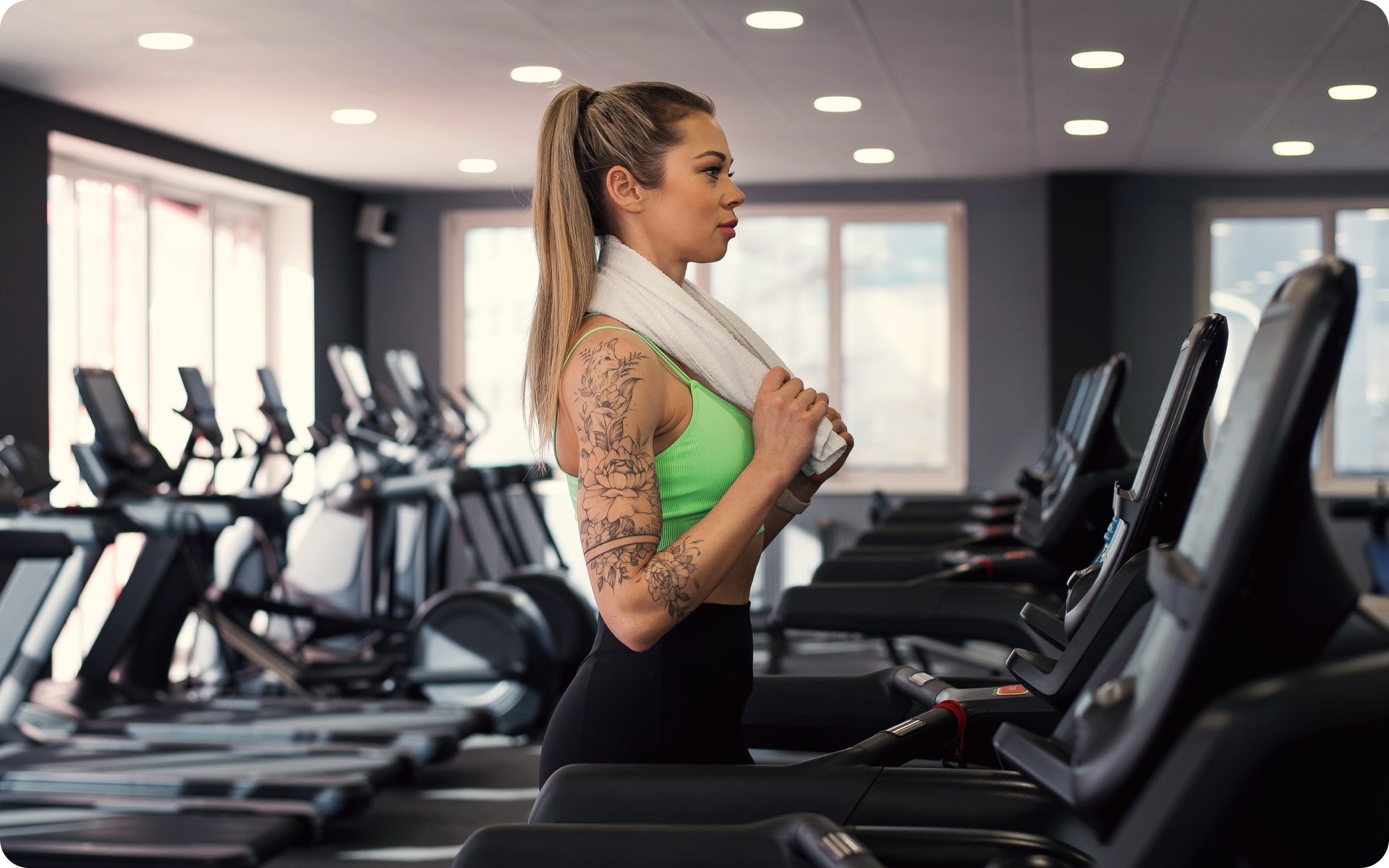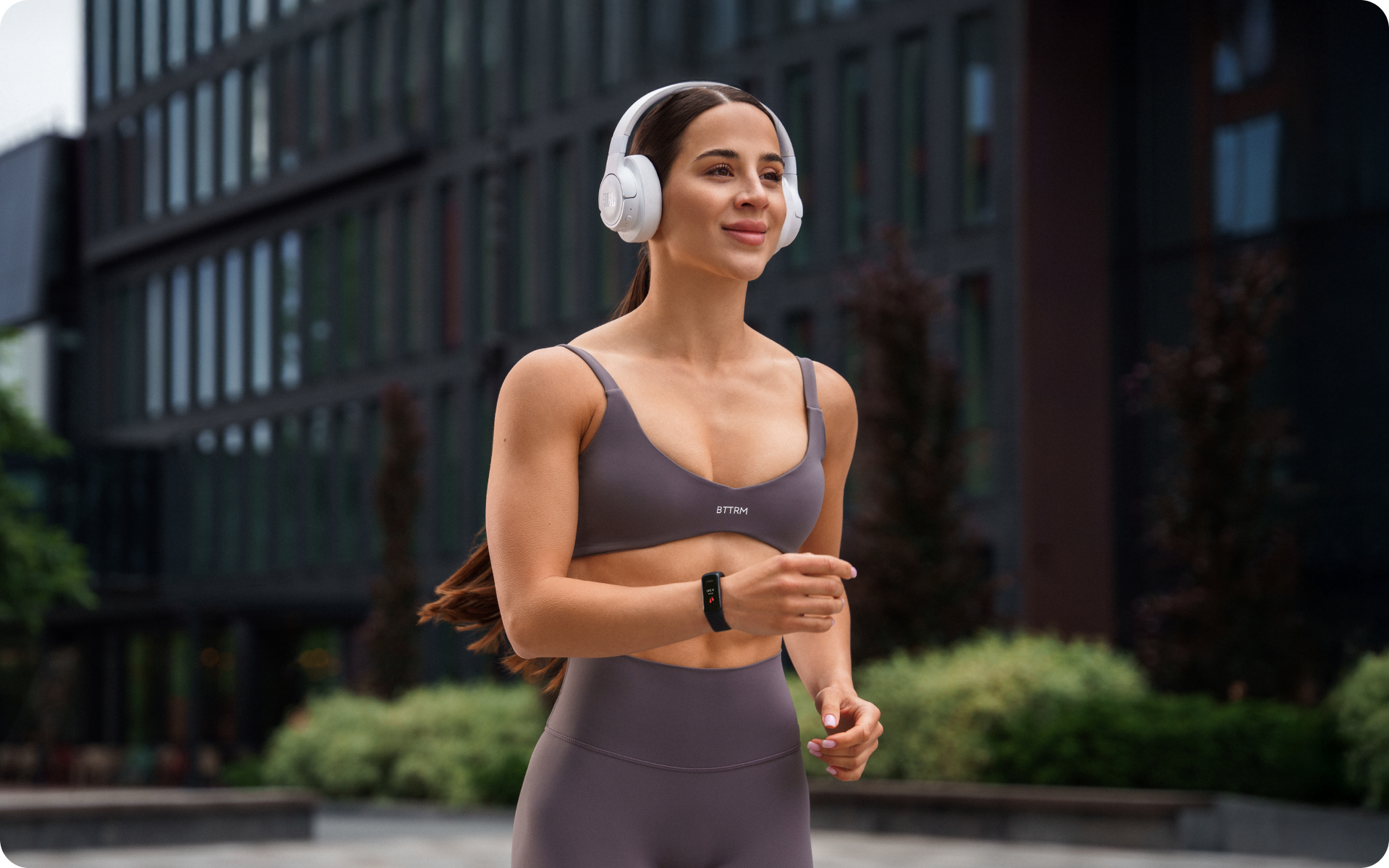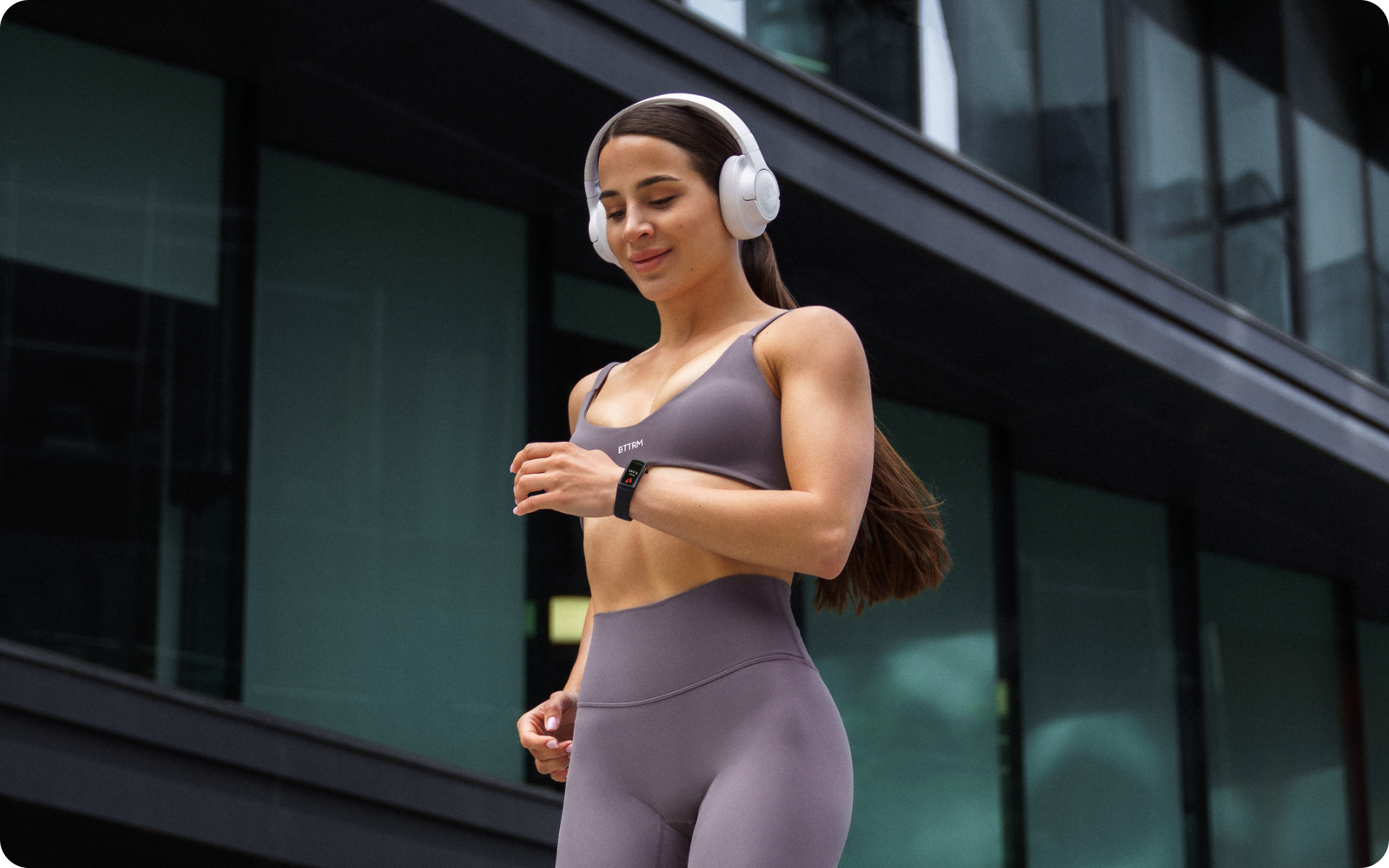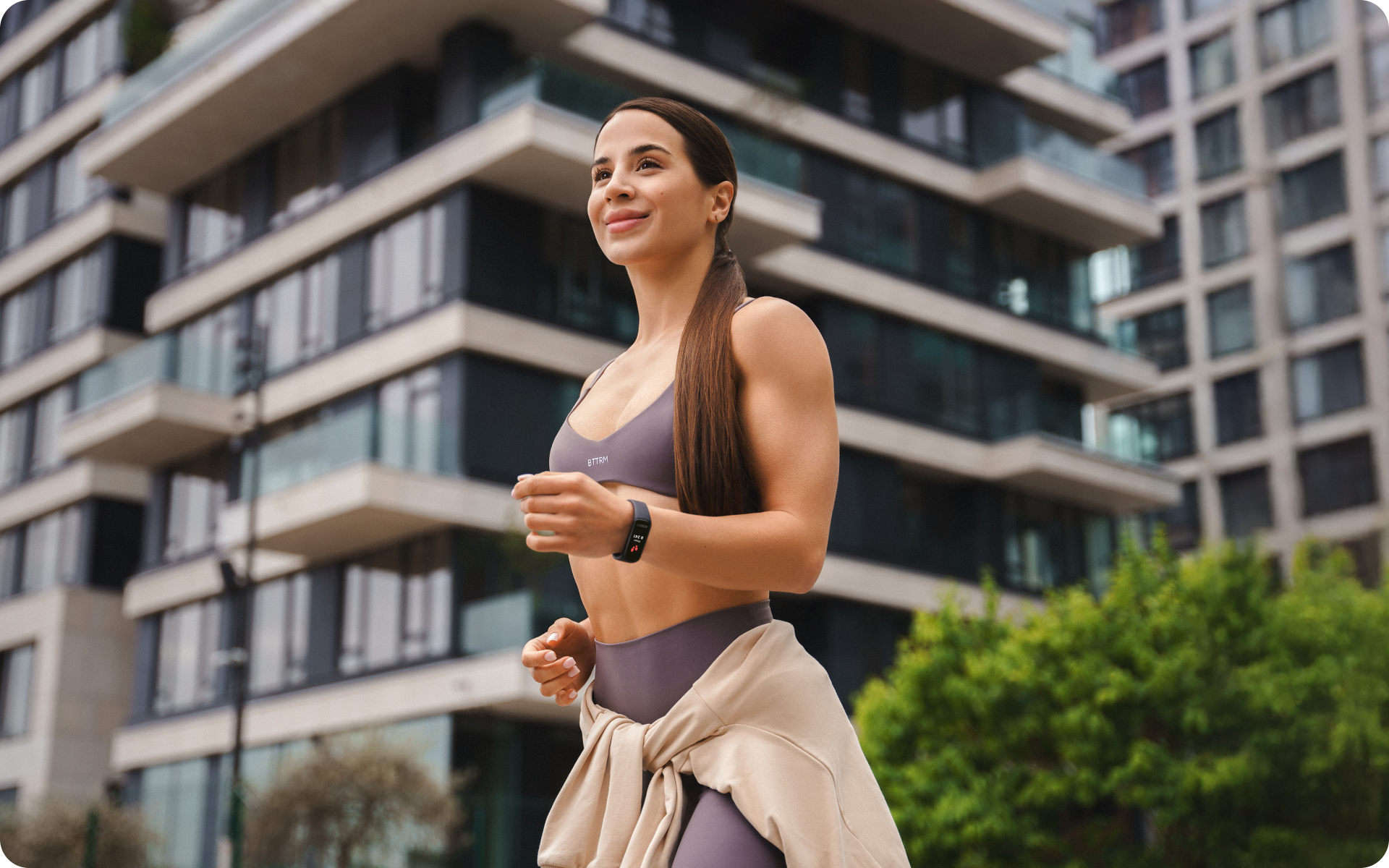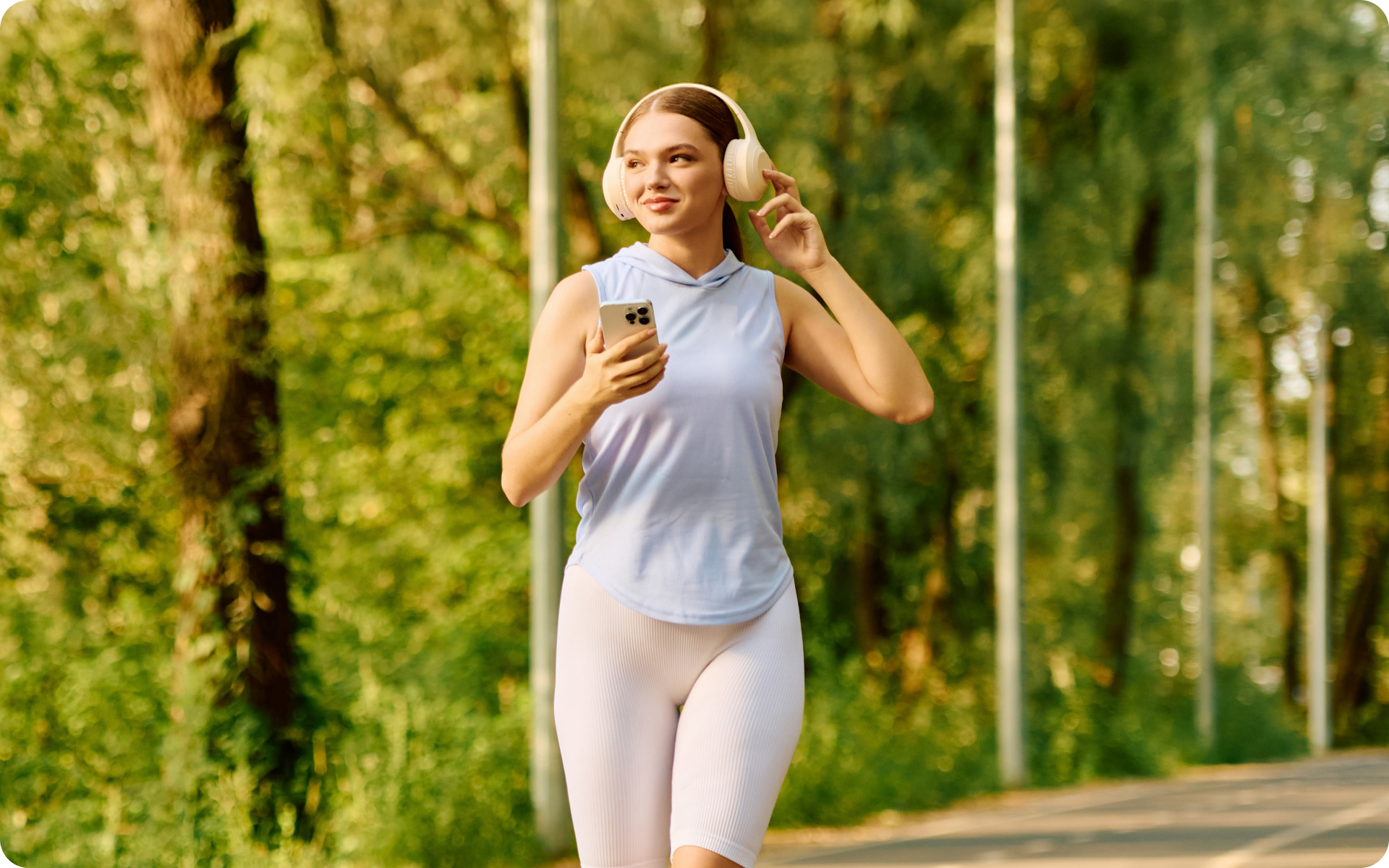According to the World Health Organization (WHO), physical inactivity is the fourth leading risk factor for global mortality (1). At least 1.4 billion adults worldwide aren’t getting enough exercise, which has led to increased risks of heart disease, diabetes, and other chronic health conditions (2).
WHO further recommends that adults aged 18-64 should do at least 150 minutes of moderate-intensity aerobic physical activity throughout the week, or at least 75 minutes of vigorous-intensity aerobic physical activity (2).
Walking fits perfectly into this framework. It’s simple, requires no special equipment, and can be done anywhere at any time.
Walking also has a low risk of injury, which makes it an ideal form of exercise for those who are just starting out or who have health conditions that restrict their physical activity.
But where do you begin? How fast should you walk? What’s the best way to make it part of your routine? This guide answers all of these questions and more. Uncover the surprising benefits of walking 15 minutes a day in our past article.
What Is an Effective Outdoor Walking Workout?
An effective outdoor walking workout combines strategy and structure to maximize your health and fitness benefits. It’s more than just strolling – it involves deliberate techniques that engage your body fully while keeping it safe. Here’s how to build one:
- Start with a Warm-Up
Start your workout with a 5-10-minute warm-up. Walk at a slower, relaxed pace to give your muscles and joints time to loosen up. This prepares your body for more intense activity and reduces the risk of injury (3).
- Focus on Your Pace
To make your workout effective, maintain a brisk walking pace. For most people, this means walking fast enough to raise your heart rate while still being able to hold a conversation. Aim for a pace that feels challenging but sustainable. A moderate-intensity walk falls between 3 and 4 miles per hour, depending on your fitness level.
- Add Intervals
Intervals are a great way to boost your workout. Alternate between periods of fast walking and slower recovery paces. For example, walk briskly for 1-2 minutes, then slow down for 1 minute to recover. Incorporating intervals increases calorie burn, improves cardiovascular fitness, and engages different muscle groups.
- Choose Varied Terrain
Walking on hills, uneven paths, or trails adds resistance and challenges your muscles in new ways. Uphill walking targets your glutes and thighs, while uneven surfaces improve balance and coordination. If you’re on a flat route, you can mimic these effects by incorporating stairs or intervals at faster paces.
- Pay Attention to Posture
Maintain proper walking form for maximum results and to avoid strain. Keep your head up and your shoulders back and allow your arms to swing naturally. Engage your core muscles for stability, and land softly on your heels, rolling through to your toes with each step.
- End with a Cool-Down
Wrap up your session by gradually slowing your pace for about 5-10 minutes. This allows your heart rate to return to its resting level. Follow the cool-down with gentle stretches for your calves, hamstrings, quads, and lower back to prevent stiffness (3).
Practical Tips for Structuring Your Walking Workout
- Time Your Walks
Aim for at least 30 minutes, but adjust based on your schedule or fitness level. Longer walks (45-60 minutes) may boost endurance. - Track Your Progress
Use a fitness tracker or app to monitor your steps, distance, and pace. Seeing improvements over time can boost motivation. - Dress for Success
Wear comfortable, supportive shoes and weather-appropriate clothing. This ensures comfort and prevents blisters or discomfort during your workout. - Mix Things Up
Rotate between different routes or walking partners to keep things interesting and prevent boredom.
By incorporating these elements, you can design an outdoor walking workout that is aligned with your fitness goals, keeps you engaged, and delivers lasting results. Our previous article covers everything you need to know about 4-week walking plan for beginners.
Read more: Is There a Walking Workout That’s More Powerful Than Jogging?
Is It Better to Walk Outside or at the Gym?
Both outdoor walking and treadmill walking offer great health benefits.
Walking Outside
Pros
- Walking outdoors often feels less monotonous. Changing scenery and fresh air can make the experience more enjoyable.
- Uneven terrain, such as trails or sidewalks, engages more stabilizing muscles, which can improve balance and coordination over time.
- Sunlight exposure boosts vitamin D levels, although this depends on location and time of day (4).
- Outdoor walking can connect you to nature, which studies have suggested supports mental well-being (5).
Cons
- Weather conditions, such as rain, heat, or snow, may limit your options.
- Uneven or crowded walking paths could increase the risk of trips or collisions.
- Air quality can be a concern in heavily urbanized areas.
Reasons why BetterMe is a safe bet: a wide range of calorie-blasting workouts, finger-licking recipes, 24/7 support, challenges that’ll keep you on your best game, and that just scratches the surface! Start using our app and watch the magic happen.
Walking in the Gym
Pros
- Treadmill walking provides a controlled environment. There’s no need to worry about weather or traffic.
- Adjustable speed and incline settings allow you to customize your workout intensity.
- Treadmills often come equipped with shock absorption, which reduces joint impact compared to asphalt or concrete.
- Gyms offer amenities like water stations and access to trainers for guidance.
Cons
- The repetitive nature of treadmill walking can feel boring for some people.
- Access requires a gym membership, which may be less convenient or cost-effective for certain individuals.
- The lack of variation in movement (flat surface, predictable pace) may not engage stabilizer muscles as effectively as outdoor terrain.
Which Is Better?
If weather or safety is a concern, walking indoors on a treadmill is a better choice. It’s also ideal if you’re aiming for specific settings such as steep inclines or fixed speeds. Conversely, walking outdoors is a better fit for those who are looking for variety, nature exposure, and a subtle challenge for balance.
Ultimately, your decision should reflect what fits seamlessly into your lifestyle and keeps you motivated.
Is Outdoor Walking Good for Weight Loss?
Outdoor walking can be an effective tool for weight loss. Its benefits go beyond burning calories and influence various factors that support a healthier body composition.
- Supports a Calorie Deficit
Weight loss occurs when you consume fewer calories than your body uses (6).
Outdoor walking contributes to this by increasing your daily energy expenditure. A brisk pace elevates your heart rate, which prompts your body to burn more calories compared to sitting or slow walking (7).
The exact number depends on your weight, walking speed, and terrain. For example, walking on a hilly path requires more energy than walking on flat ground, as your muscles work harder to overcome gravity.
- Promotes Fat Mobilization
Outdoor walking at a moderate intensity taps into fat as a primary energy source. This is particularly true during steady-state exercise in the “fat-burning zone”, which ranges from about 50-70% of your maximum heart rate (8).
While high-intensity workouts can also help with fat loss, the moderate walking pace is more sustainable for longer durations, encouraging consistent fat use for energy.
- Builds Lean Muscle and Protects Metabolism
Walking, particularly on uneven or sloped terrain, engages muscles in the legs, hips, and core. Over time, this contributes to lean muscle development (9).
Maintaining or increasing muscle mass is key for weight management because muscle tissue burns more calories at rest than fat tissue (10). This helps sustain a healthy metabolism, even when you’re not moving.
- Regulates Appetite
Regular outdoor walking may also help with appetite regulation. Research has suggested that moderate exercise can reduce levels of ghrelin, a hormone responsible for hunger (11).
In addition, walking outdoors can shift focus away from food cravings by providing mental distraction and reducing emotional eating triggers (12).
- Reduces Stress and Cortisol Levels
Chronic stress and elevated cortisol (a stress hormone) can lead to weight gain or difficulty losing weight, particularly around the abdomen (13).
Outdoor walking, particularly in green environments, has been shown to lower cortisol levels and promote relaxation (14, 15). This physiological calming effect can indirectly help with weight loss by mitigating one of the barriers to fat loss.
- Encourages Long-Term Adherence
Consistency is essential for weight loss. Outdoor walking is accessible, low-impact, and adaptable to different fitness levels, which makes it easier to stick with over time. Its mental health benefits, such as improved mood and reduced symptoms of anxiety, further encourage regular participation.
- Non-Exercise Activity Thermogenesis (NEAT)
Outdoor walking for daily errands or leisure adds to your NEAT, which includes all physical activity outside of structured exercise. NEAT can significantly impact your overall calorie burn over time and contribute to a calorie deficit without feeling like “work” (16).
- Enhances Sleep Quality
Quality rest supports weight loss by regulating hunger hormones and providing energy for physical activity (17). Outdoor walking, particularly earlier in the day, is aligned with your body’s circadian rhythm and can improve sleep duration and quality (18).
How Long Should an Outdoor Walk Be?
The World Health Organization recommends at least 150 minutes of moderate-intensity aerobic activity weekly (2). This can be broken down into manageable sessions, such as 30 minutes a day, 5 days a week.
For weight loss or additional fitness gains, increasing this to 300 minutes weekly may be more effective. A brisk walk, where you can talk but not sing, typically falls within the moderate-intensity range.
If your goal is simply to improve general health or maintain your current fitness, even shorter walks of 10-15 minutes can make a difference, particularly when done consistently.
- Beginners
If you’re new to regular exercise, start with shorter walks, such as 10-20 minutes, and gradually increase the duration. This allows your body to adapt and lowers the risk of overuse injuries or burnout. - Specific Health Conditions
People with chronic conditions, such as arthritis or cardiovascular issues, may benefit from shorter, lower-intensity walks. Consulting a healthcare provider or physical therapist can help tailor a safe and effective plan. - Advanced Fitness Levels
For individuals who are aiming to enhance their endurance or performance, longer walks of 60-90 minutes can be beneficial. Incorporating hilly terrain or faster paces may further challenge the cardiovascular system and muscles. - Time Constraints
If you have a busy schedule, multiple short walks (e.g. three 10-minute sessions spread throughout the day) can offer comparable benefits to a longer, continuous walk.
The duration of your walk also depends on its intensity. A short, brisk walk can provide similar calorie-burning effects to a longer, leisurely stroll. In addition, the terrain and environment play a role. For example, walking uphill or on uneven surfaces may require shorter times to achieve the same level of exertion as a flat, paved route.
The best duration for your outdoor walk is one that feels challenging yet enjoyable, is aligned with your goals, and fits into your daily routine. For more details about walking program for seniors, take a look at our prior publication.
What Happens If You Walk 30 Minutes a Day for a Month?
Walking 30 minutes daily for a month lays a solid foundation for better health. The potential effects on your weight, strength, mood, and cardiovascular health are cumulative and depend on broader lifestyle factors.
Here are some changes you can expect:
You May Burn Extra Calories
Walking is a moderate-intensity exercise that increases your daily energy expenditure. If your pace is brisk, you could burn approximately 100-190 calories during each 30-minute session, depending on your weight and walking speed (19). Over a month, this can contribute to a calorie deficit, which is the key to gradual weight loss (6). However, the outcomes are largely dependent on your diet and overall energy balance.
Your Cardiovascular Health Could Improve
Consistent walking strengthens your heart by improving blood flow and reducing resting heart rate over time. It may help lower blood pressure and cholesterol levels, reducing your risk of heart disease (20, 21). As walking promotes better oxygen delivery to your muscles, you may also notice increased stamina and less fatigue when you’re performing daily activities.
You May Feel Stronger
30 minutes of walking engages major muscle groups such as your legs, glutes, and core. Over a month, this regular activity can enhance muscle endurance and even tone your lower body, particularly if you incorporate hills or uneven terrain. While walking isn’t as effective as strength training for building muscle, it can complement a well-rounded fitness routine.
Your Mental Health May Benefit
Physical activity, which includes walking, triggers the release of endorphins, which are natural mood elevators (22). Walking outdoors has the added advantage of exposing you to natural light, which can improve symptoms of mild depression or seasonal affective disorder (SAD) (22). You may also find that these daily walks reduce stress levels and provide mental clarity.
The BetterMe: Health Coaching app will provide you with a host of fat-frying fitness routines that’ll scare the extra pounds away and turn your body into a masterpiece! Get your life moving in the right direction with BetterMe!
You Could Sleep Better
Research has linked regular exercise, including walking, to improvements in sleep quality. Moderate-intensity aerobic activity can help regulate your body’s circadian rhythm, which is essential for falling and staying asleep (18). A month of walking daily may leave you feeling more rested and refreshed.
You May Notice Improved Blood Sugar Regulation
Walking after meals is particularly effective for reducing blood glucose levels by enhancing insulin sensitivity. Regular walking throughout the month could help stabilize blood sugar, especially if you’re managing prediabetes or type 2 diabetes (23). This benefit also plays a role in sustained energy levels throughout the day.
You’ll Build a Positive Habit
After a month, daily walking can become part of your routine, making it easier to maintain in the long term. Consistency can motivate you to set and achieve other fitness or health-related goals. The sense of accomplishment after completing a daily walk can also foster greater self-discipline and confidence.
Read more: Recommended Steps Per Day by Age: How Many Steps You Should Take Daily?
Is It Better to Walk in the Morning or Evening?
The best time to walk depends on your lifestyle, personal goals, and how your body responds to exercise at different times of the day. Each option has unique advantages and drawbacks. Here’s a breakdown to help you decide.
Morning Walks
Pros:
- Morning walks can boost your energy and alertness for the day.
- They may help regulate your circadian rhythm, improving your sleep-wake cycle.
- Cooler temperatures in the morning can be more comfortable, particularly in warmer climates.
- Walking on an empty stomach may encourage fat utilization for energy, although the effects are modest (24).
Cons:
- Stiffness or muscular tightness can be more common after waking up.
- Early schedules may not suit everyone.
- Limited daylight hours in some seasons can make morning walks less appealing.
Evening Walks
Pros:
- Evening walks can help reduce stress from the day and promote relaxation.
- Your body temperature is generally higher, which could improve muscle flexibility and performance (25).
- Walking after dinner may help regulate blood sugar levels.
- You’re less likely to feel rushed compared to in the mornings.
Cons:
- Fatigue from the day may reduce your motivation.
- Walking too close to bedtime may interfere with your ability to wind down.
- Certain areas may feel less safe after dark, which limits your outdoor options.
When to Choose Each
- Morning walks may work best if you have an early schedule or want to energize yourself for the day ahead.
- Evening walks may suit those who feel more productive or relaxed later in the day or who need a way to de-stress after work.
- If safety, temperature, or personal preference are concerns, adapt your routine to what feels most comfortable and practical.
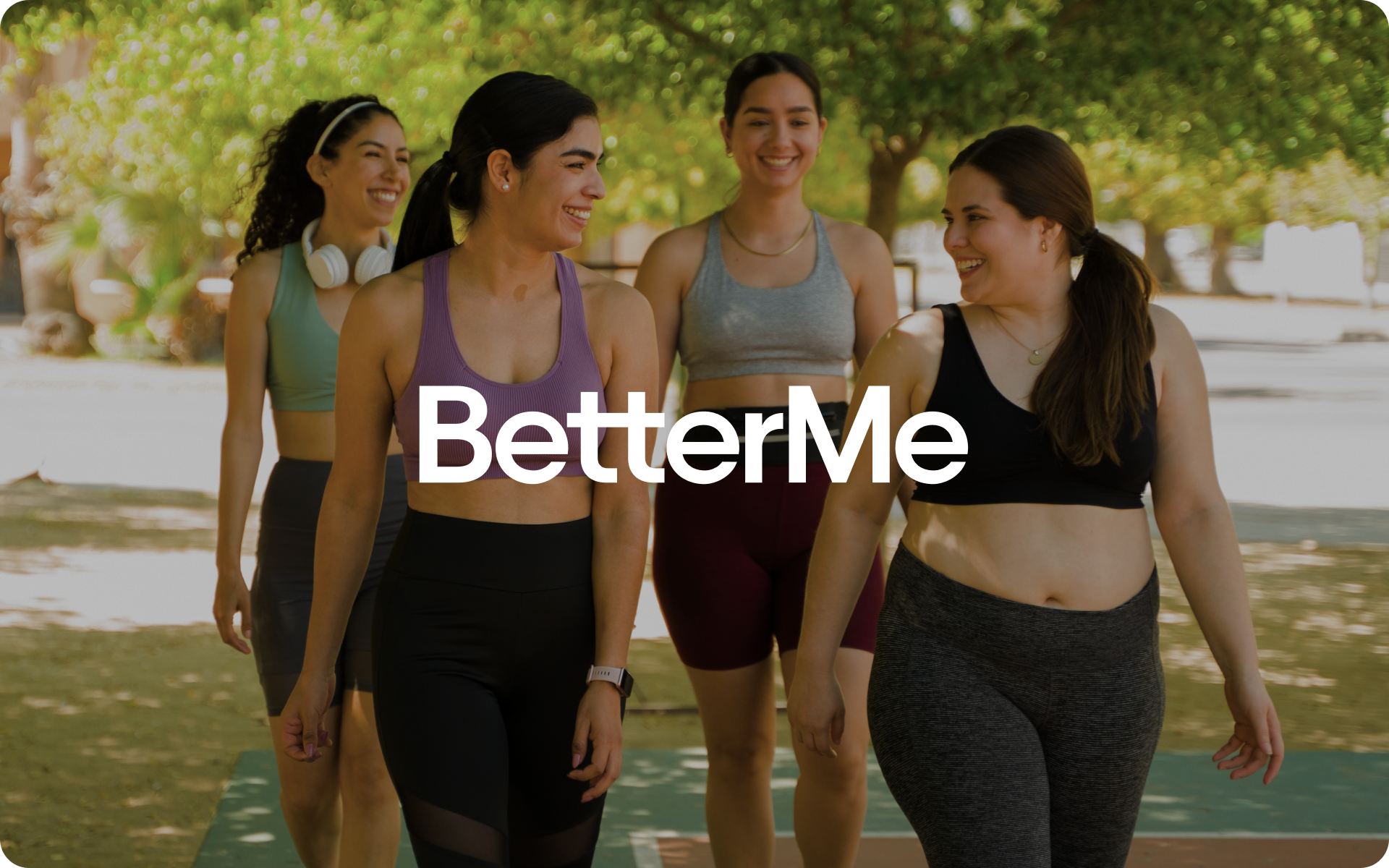
Outdoor walking primarily builds muscular endurance, not significant muscle mass. It targets lower-body muscles such as the calves, hamstrings, quads, and glutes. Inclined terrain or adding resistance, such as carrying a backpack, can engage these muscles more intensely, although the hypertrophy (muscle growth) is minimal compared to strength training. Walking indoors and outdoors can both contribute to physical activity, but they differ. Outdoor walking benefits from varied terrains, fresh air, and sunlight, which can boost mental and cardiovascular health. Indoor walking is usually more controlled and accessible in poor weather but may lack some of the same physiological and psychological benefits (26). Walking won’t directly build significant abdominal muscle, but it engages your core muscles to maintain balance and posture. Walking briskly or on uneven terrain can increase this engagement. However, building visible abs typically requires targeted strength training and a low body fat percentage. Bodybuilders often walk because it’s an effective form of low-impact cardio. It helps burn calories to reduce body fat without risking muscle loss or overexerting muscles that are already stressed from resistance training. Walking also helps with recovery by improving circulation and reducing muscle stiffness.Frequently Asked Questions
Does outdoor walking build muscle?
Is walking in the house the same as walking outside?
Does walking build abs?
Why do bodybuilders walk so much?
The Bottom Line
Outdoor walking is a simple yet effective way to improve your health and well-being. It offers benefits such as enhanced cardiovascular health, improved mood, and better endurance. An effective walking workout includes a proper warm-up, maintaining a brisk pace, incorporating intervals, and choosing varied terrain. Take time to experiment with different approaches and create a routine that feels both enjoyable and sustainable.
DISCLAIMER:
This article is intended for general informational purposes only and does not serve to address individual circumstances. It is not a substitute for professional advice or help and should not be relied on for making any kind of decision-making. Any action taken as a direct or indirect result of the information in this article is entirely at your own risk and is your sole responsibility.
BetterMe, its content staff, and its medical advisors accept no responsibility for inaccuracies, errors, misstatements, inconsistencies, or omissions and specifically disclaim any liability, loss or risk, personal, professional or otherwise, which may be incurred as a consequence, directly or indirectly, of the use and/or application of any content.
You should always seek the advice of your physician or other qualified health provider with any questions you may have regarding a medical condition or your specific situation. Never disregard professional medical advice or delay seeking it because of BetterMe content. If you suspect or think you may have a medical emergency, call your doctor.
SOURCES:
- PHYSICAL ACTIVITY FOR HEALTH (2010, ncbi.nlm.nih.gov)
- Physical activity (2024, who.int)
- Warm Up, Cool Down (2024, heart.org)
- Sunlight and Vitamin D: A global perspective for health (2013, ncbi.nlm.nih.gov)
- Nature-based outdoor activities for mental and physical health: Systematic review and meta-analysis (2021, ncbi.nlm.nih.gov)
- Optimal Diet Strategies for Weight Loss and Weight Loss Maintenance (2020, ncbi.nlm.nih.gov)
- Effect of Brisk Walking on Health-Related Physical Fitness Balance and Life Satisfaction Among the Elderly: A Systematic Review (2022, frontiersin.org)
- What To Know About Heart Rate Zones (2023, health.clevelandclinic.org)
- Biomechanics and energetics of walking on uneven terrain (2013, ncbi.nlm.nih.gov)
- Increasing muscle mass to improve metabolism (2013, ncbi.nlm.nih.gov)
- The impact of acute exercise on appetite control: Current insights and future perspectives (2023, sciencedirect.com)
- Natural environments and craving: The mediating role of negative affect (2019, sciencedirect.com)
- Obesity and Stress: A Contingent Paralysis (2022, ncbi.nlm.nih.gov)
- Health Benefits of Walking in Nature: A Randomized Controlled Study Under Conditions of Real-Life Stress (2020, journals.sagepub.com)
- Greenspace Interventions, Stress and Cortisol: A Scoping Review (2021, ncbi.nlm.nih.gov)
- Non-exercise activity thermogenesis (NEAT): a component of total daily energy expenditure (2018, ncbi.nlm.nih.gov)
- Sleep Deprivation: Effects on Weight Loss and Weight Loss Maintenance (2022, ncbi.nlm.nih.gov)
- The Effect of Physical Activity on Sleep Quality and Sleep Disorder: A Systematic Review (2023, ncbi.nlm.nih.gov)
- Calories burned in 30 minutes of leisure and routine activities (2021, health.harvard.edu)
- Walking – the first steps in cardiovascular disease prevention (2010, ncbi.nlm.nih.gov)
- Walking vs running for hypertension, cholesterol, & diabetes risk reduction (2013, ncbi.nlm.nih.gov)
- Role of Physical Activity on Mental Health and Well-Being: A Review (2023, ncbi.nlm.nih.gov)
- Walking for subjects with type 2 diabetes: A systematic review and joint AMD/SID/SISMES evidence-based practical guideline (2020, sciencedirect.com)
- Effects of aerobic exercise performed in fasted v. fed state on fat and carbohydrate metabolism in adults: a systematic review and meta-analysis (2016, cambridge.org)
- Circadian Rhythms in Exercise Performance: Implications for Hormonal and Muscular Adaptation (2011, ncbi.nlm.nih.gov)
- The Effects of Outdoor versus Indoor Exercise on Psychological Health, Physical Health, and Physical Activity Behaviour: A Systematic Review of Longitudinal Trials (2023, ncbi.nlm.nih.gov)
